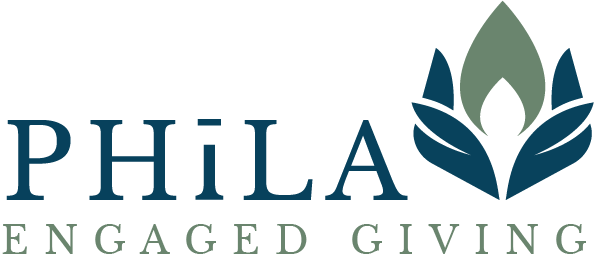Nancy Reid, Impact Strategist and Phīla Collaborator
By Nancy Reid, Impact Strategist
Will you join me in a thought experiment?
What if, instead of asking ourselves what kinds of giving the tax code permits and rewards, we asked ourselves a different set of questions?
What if we asked ourselves: how do we want to invest in community, economy, and ecology? What mechanisms might we put in place now to support communities and ecologies two or three or seven generations from now?
And based on that vision, what kinds of funding will be most effective in bringing about the change we most wish to see in the world?
For example, if we want to eliminate ocean plastics, surely we need policy to regulate waste streams, and public and philanthropic capital to fund the thankless work of cleaning up rivers around the world. But I don’t see a solution to this problem that doesn’t also rely on innovation and change within the private sector.
We need to accelerate funding of startups using new technologies to reduce and displace plastics across form functions. And then we need venture capitalists poised to support those technologies and scale them across industries. And then? We need large public companies, particularly in consumer packaged goods, to see these innovations as a competitive advantage and acquire those technologies to replace plastics at the start of the product cycle.
So while a wealthy person might look at the problem and begin to research environmental nonprofits, what if that person also thought of herself as an investor? She might also become an angel investor in green technologies, reallocate part of her private investing portfolio to venture funds with explicit focus on accelerating technologies that mitigate or resolve environmental problems, or invest in an activist public equities fund that uses shareholder power to advocate for improved environmental policies at large public corporations.
In another example, a philanthropist focused on racial equity might be inclined to donate to BIPOC-led community nonprofits or make grants to HBCUs. And these efforts are powerful ways to support communities of color. But as long as payday lenders are the most available lenders in underserved communities, and Black homeowners continue to receive lower valuations for their homes, and less than 1% of venture capital goes to fund companies led by diverse teams, our country’s racial wealth gap and discrepancies in outcomes will remain intolerably vast.
An investor willing to mobilize investment capital to support their philanthropic goals, however, might reallocate portions of their investment portfolio to buy CD’s at Black-owned banks actively lending in Black communities. They might find investments that fund the conversion of private companies to employee ownership in communities of color. They might buy a broad index of publicly traded stocks run by an asset manager who actively votes shareholder proxies and advocates for inclusive HR policies and environmental justice in urban areas.
We are not financial advisors, and unfortunately we can’t recommend specific investments. But wealthy clients who choose to mobilize some portion of their investable wealth have the option to design an investment approach that allocates money to:
Finance only (conventional investing)
Finance first (ESG and other “socially responsible” approaches, of which many are performative, so beware)
Thematic (attempting to achieve strong financial returns and strong positive impact)
Impact first (investing made primarily to advance an issue area, with high financial risk or below-market financial returns)
Impact only (traditional philanthropy)
We help clients think through the logistics and tradeoffs involved in each of these approaches, and coordinate with clients’ investment advisors to see what’s possible, in order to build an integrated capital strategy that funds innovation and problem-solving in our communities and on this planet.
This work requires that we examine our assumptions about the purpose of investing, which can cause nervousness. But doesn’t the future require us to expand our beliefs about what’s possible? Many investors find that the impact they can have by mobilizing an array of capital sources lasts far longer than the discomfort of examining our assumptions about the purpose of wealth. A trusted guide can even help make the journey well worth taking.




